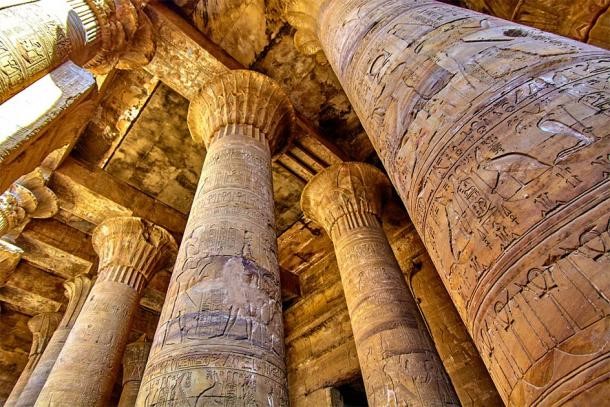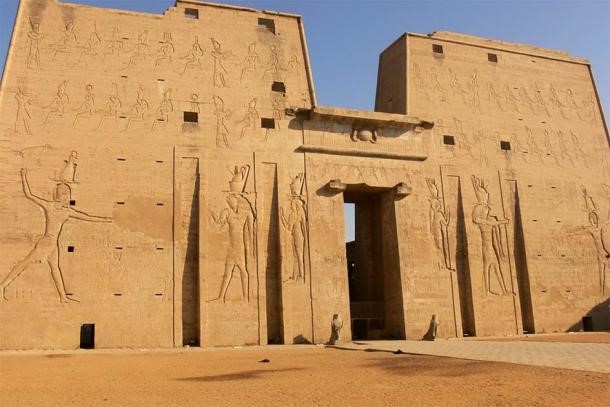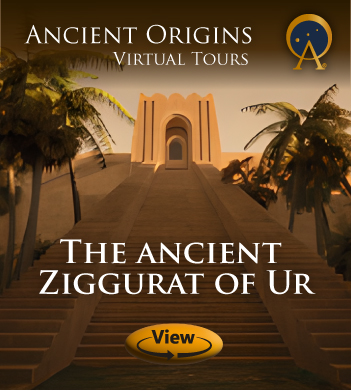
The Temple of Edfu is the second largest temple in Egypt and the best preserved shrine in the country. It is located on the west bank of the Nile in the city of Edfu, between Luxor and Aswan.
Construction of the Temple of Edfu began under Ptolemy III Euergetes, the third ruler of Ptolemaic Kingdom, in 237 BC, and was finished in 57 BC under the rulership of Ptolemy XII Auletes. The construction of the temple took such a long time to complete due to the many nationalistic uprisings in Upper Egypt during that period.
The Temple of Edfu is dedicated to the falcon god Horus, the son of Isis and Osiris. It was the center of several festivals sacred to Horus, including his ritual marriage with the goddess Hathor.
The Temple of Edfu consists of a monumental gateway entrance, a courtyard surrounded by 32 giant columns, an outer and inner hypostyle hall, an offering chamber and a second antechamber with access to the sanctuary of Horus. It is considered to be the finest example of a classic, ancient Egyptian temple.

The magnificent columns of the Temple of Edfu. (EwaStudio / AdobeStock)
An impressive feature of the Temple of Edfu is its inscriptions, which cover the walls of the monument. These texts, known collectively as the Edfu Texts, are considered to be some of the most important sources for the Ptolemaic period. Considering that various Ptolemaic rulers were involved in the temple’s construction, the texts provide an insight into the political history and administration of the period. The Edfu Texts also contain religious ideas that were transmitted from earlier ages. This is an invaluable resource for modern scholars, as the texts have been used to help them understand older religious sources.
After the fall of the Ptolemaic Kingdom, the Temple of Edfu continued to flourish during the Roman period. By the end of the 4th century AD, however, the temple was abandoned, following the banning of paganism throughout the Roman Empire by the Emperor Theodosius. Over the centuries, desert sand and silt from the Nile covered the temple, eventually burying it entirely. It was only in 1860 that the temple was rediscovered and excavated. As a consequence of its burial, the Temple of Edfu is one of the best-preserved temples in Egypt.
Read more about the Temple of Edfu
Top image: The world-famous Temple of Edfu pylon or monumental gateway. (Walwyn / Flickr)






